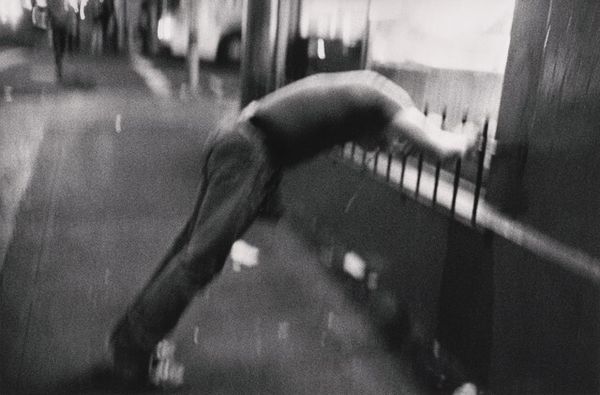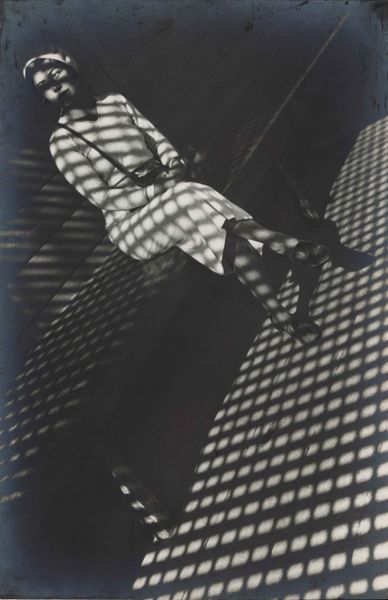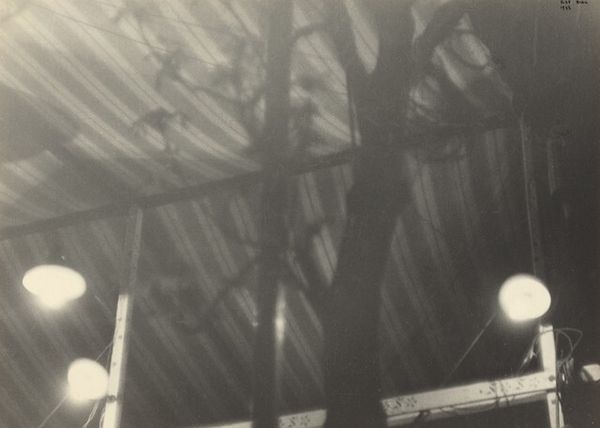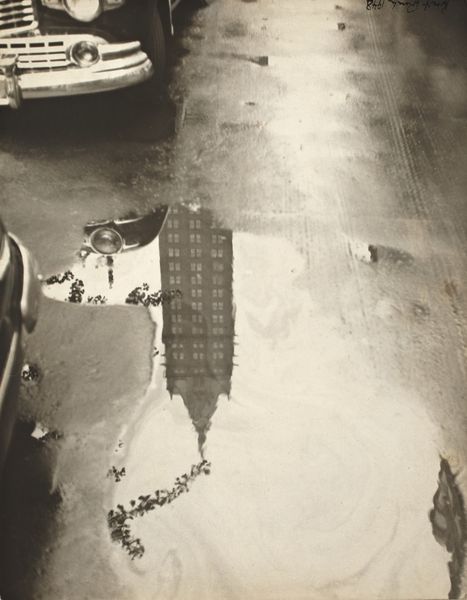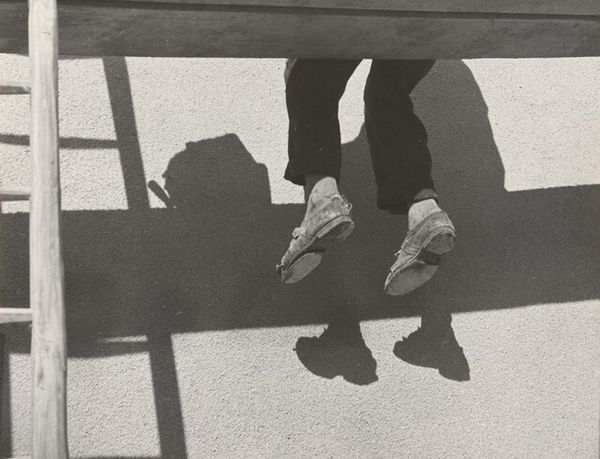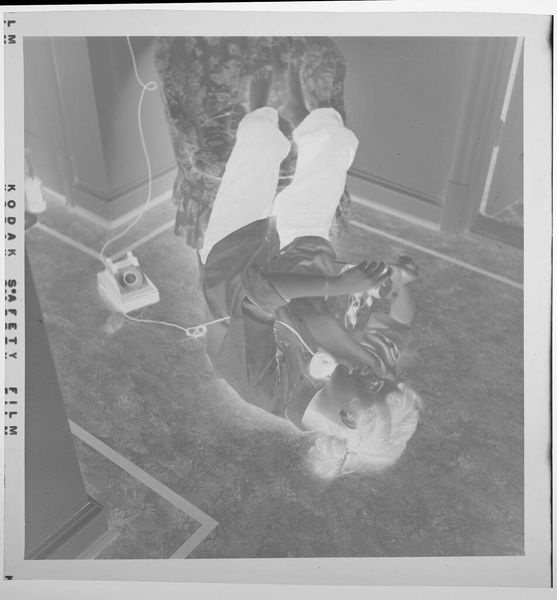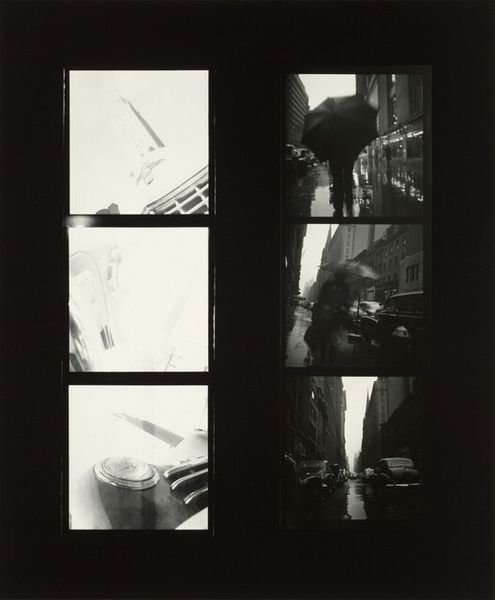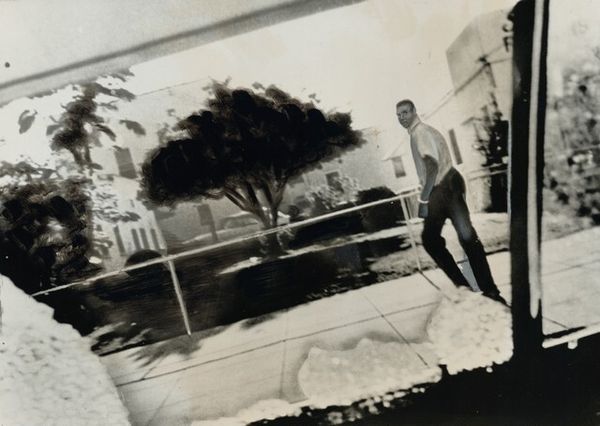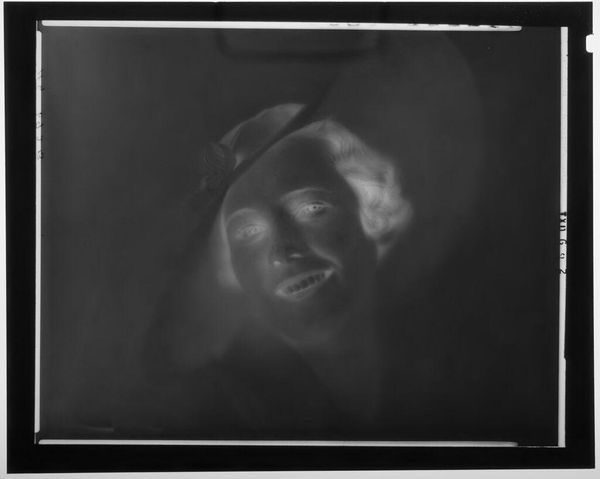
photography
#
portrait
#
self-portrait
#
photography
#
monochrome photography
#
modernism
Dimensions: sheet (trimmed to image): 8.3 x 9.2 cm (3 1/4 x 3 5/8 in.)
Copyright: National Gallery of Art: CC0 1.0
Curator: Looking at this vintage photograph, you immediately sense Károly Escher's playful spirit in this self-portrait from around 1932. Editor: Absolutely, it's playful yet kind of eerie, like a mirror maze reflecting multiple realities all at once. The grid in the foreground almost traps you, makes you conscious of observation. Curator: Escher offers such a curious perspective here, doesn't he? It's an upward shot in monochrome. He's got a fedora on, holding his camera. In the reflections, we get these fractured perspectives... bits of other people caught unaware. Editor: Yes, the hat… it feels so self-aware. There's a shadow right above Escher’s head, which, from my point of view, functions as a crown—a crown of smoke and mystery. Does the grid pattern lock up Escher's view to suggest a hidden intention or goal in plain sight? Or a prison in reverse, as his vision breaks from being locked within by spreading in multiple ways? Curator: The use of photography as the medium speaks volumes too. Here's Escher capturing his own likeness— but also playing with the truth inherent to the process of capturing the instant through reflected angles that hint at surrealistic tendencies. In other words, he doesn't need to paint an entirely imagined reality— reality itself contains enough uncertainty when presented at an odd angle. Editor: He presents not only the visible but an emotional response, an atmosphere, so much so that you can almost reach through it to discover all that lurks behind these selves within a self. Károly Escher presents our image reflecting in all directions—past, present, and future. Curator: Thinking about how images, especially self-portraits, solidify identity... I find the deconstruction presented here very affecting, as though our singular "self" is actually constructed by an assembly of momentary interactions with others, a social media long before its invention. I find the photograph, in sum, full of both charm and genuine artistic insight. Editor: Precisely! A meditation on perception and representation and how symbols themselves are a reflection. Thank you.
Comments
No comments
Be the first to comment and join the conversation on the ultimate creative platform.

